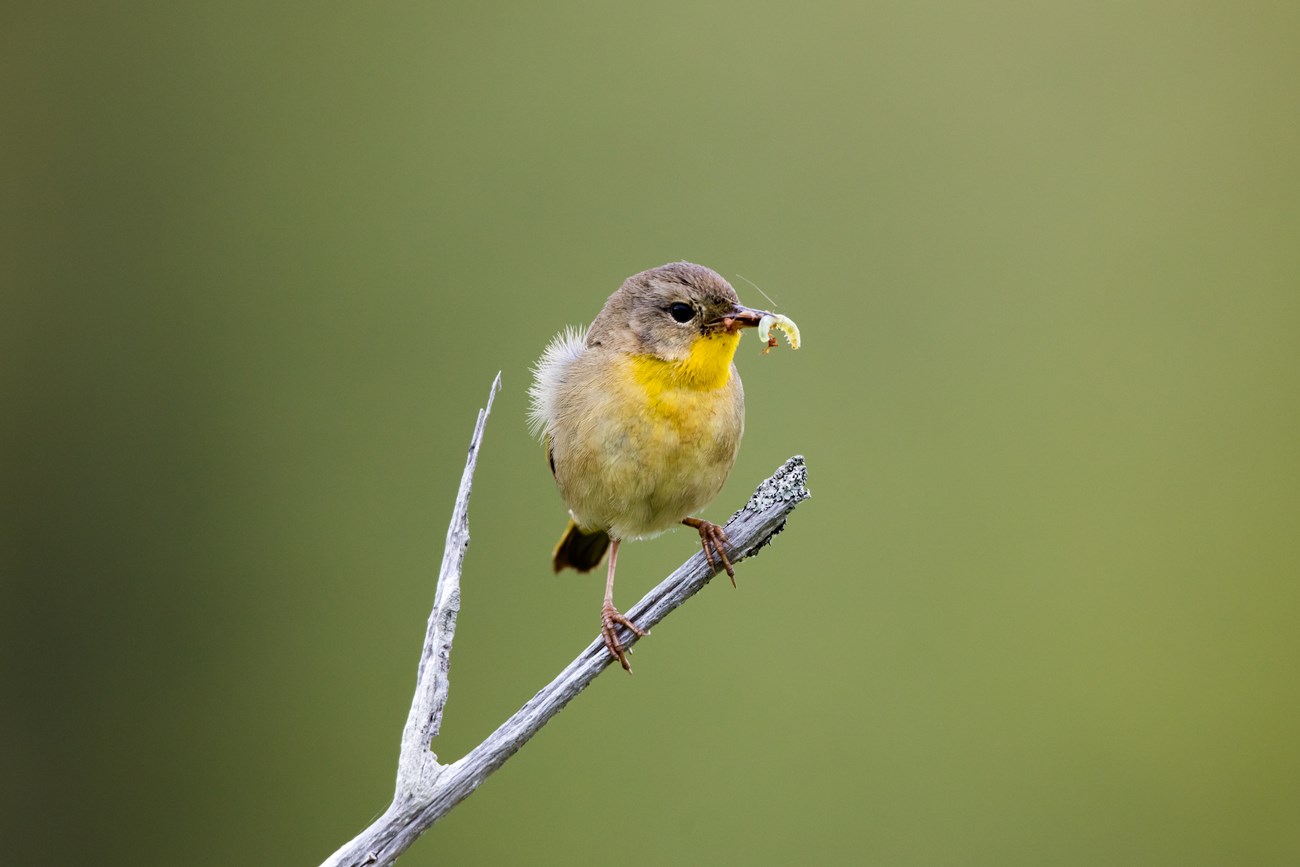Last updated: May 19, 2025
Article
Research Brief: Making National Songbird Data Local

Photo by Emma Forthofer, Friends of Acadia
Listening to songbirds means more than just enjoying their tunes. Sensitive to change in the environment around them, resident and migratory songbirds can provide early indications of shifts that might have broader implications for an entire ecosystem, according to Penn State doctoral student Veronica Winter. That’s why keeping a close eye on songbird welfare over a broad time scale can elicit insights that ripple well beyond a small population of warblers or chickadee.
When ecologist and Second Century Stewardship Fellow Allyson Jackson and Acadia National Park wildlife biologist Bik Wheeler proposed establishing a long-term songbird monitoring program at Acadia, Winter saw an opportunity to tell big stories in a smaller sphere. Having previously immersed herself in Acadia National Park's ecosystem as part of the Acadia Bug Project team in the Summer of 2018, she recognized Acadia as an ideal space for contributing to ongoing songbird research. Acadia's commitment to establishing a long-term monitoring program, combined with its vibrant and dedicated birder community, created the perfect ecosystem for Winter’s questions. An established connection to the park completed the foundation for this project, bringing together institutional support, community engagement, and scientific expertise in an extraordinary convergence of opportunity.
Her interest in quantitative ecology, which uses statistical models to analyze natural systems, led her to the Institute for Bird Populations, a California-based nonprofit organization that manages the Monitoring Avian Productivity and Survivorship (MAPS) program. Institute ecologists process and analyze data submitted by collaborators around North America, who trap birds with netting, place bands around their legs, and document demographic data about the birds and their health before releasing them. The standardized protocol ensures that data translate across individual sites, helping facilitate important insights about the state of bird populations across the United States.
“I am always excited to contribute to broader-scale science,” said Winter, a 2025 Acadia Science Fellow. “I love that MAPS is this nationwide effort you can be a part of, and that the data that you're collecting is contributing systematically to this bigger picture of what's happening to bird communities.”
However, local analysis isn’t a built-in part of the effort, and there isn’t a system for documenting important aspects of local bird population health, including behaviors such as nesting, feeding, and territorial displays.
Winter wants to change that. She thinks Acadia’s MAPS data can offer more precise insights about how birds are doing within the park. That could help inform conservation strategies for individual species, such as habitat improvements or nest protections.
The plan: work with Acadia scientists to pilot a new data collection strategy, one that increases the amount of information available. The methods will entail strategically placing mist nets at several locations, considering aspects like nearby vegetation and canopy cover to balance the number of birds who fly near that location with the diversity of species it captures. Some sites might focus on songbirds, like black-capped chickadees and red-eyed vireos, that have been shown to signal the broader health of their habitats.
In the long run, Winter wants to know what sample size is necessary to draw meaningful conclusions about trends among Acadia’s bird populations. But she also wants to explore ways to make the survey as useful as possible, gauging if the types of information MAPS measures is enough to give park scientists the information they need to protect Acadia’s songbirds.
